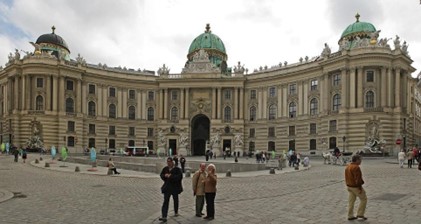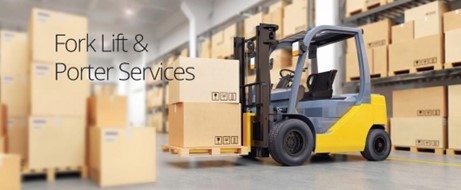Blog
The Best Cities to Move to In Austria
Austria has plenty to offer – a sound economy and public sector, stunning scenery, plenty of places to study and a rich cultural heritage. But which is the best city to move to. The Moving Partnership, who offer competitive international removals to Austria, have been finding out.

Vienna – For the Culture
If you will have time to enjoy the arts and culture, then Vienna should be your choice. The country’s capital has plenty for classical music fans – the Mozarthus museum (the former home of Mozart himself) features concerts of Beethoven and Schubert on its programme as well as Wolfgang Amadeus himself.
There are plenty of palaces too – the Hofburg Imperial Palace, above, is right in the city centre. If you prefer more recent history, then the Prater amusement park, with its giant wheel, is worth a visit. It was made famous in the film The Third Man, which was set in the city’s immediate post-war period.
There are other advantages of moving to Vienna. The large expat community means there are plenty of English speakers (upwards of 300,000), and the public transport system is well developed. There should be plenty of job/career opportunities as well.
Graz – for the Budget-Conscious (and the Student)
However, one disadvantage of Vienna is that accommodation prices tend to be much higher than elsewhere in the country. For this reason, it may be worth considering moving to one of the smaller cities, such as Graz to the south of the country (which is fairly close to the border with Slovenia).
This city has not one but eight universities, with the Karl-Franzens-Universitat (also called the University of Graz) probably the best known, being ranked in the world’s top 500 in the QS World University Rankings in 2024. This is aided by the fact that many courses are taught in English.
Not only are accommodation costs much lower than in Vienna or Salzburg and there’s plenty of student nightlife on offer. The city centre, with its historic Town Hall and Castle Hill, is also a UNESCO World Heritage site.
Innsbruck – For the Skiing and Winter Sports
The fifth largest city in the country, and the capital of the Western state of Tyrol, has plenty of job opportunities, but the main reason for choosing Innsbruck is the beautiful scenery. It’s in the heart of the Alps, so it won’t take long to get on the downslopes.
The city hosted the Winter Olympics in 1964 and 1976 (and the Winter Paralympics more recently). It’s a hub for all winter sports, not just skiing – snowboarding, mountaineering, ice skating, and more. The city is also well known for its modern architecture, including some of the sports arenas.
Linz – For Sustainable Living
The city of Linz, the capital of Upper Austria and country’s third largest city, has plenty of parks and green spaces, including Stadtpark and Schlosspark, as well as the Botanical Gardens, so there are plenty of places to chill out. It also helps that it is located on the River Danube.
In addition, the city is one of the leading exponents of green roofs, where there are plenty of incentives to add or build one. The authorities have also encouraged the growth of farmers’ markets – there are 11 regularly held in the city.
Generally, the pace of life is much slower and more relaxed in Linz than many other cities in the country.
International Removals to Austria with The Moving Partnership
At The Moving Partnership we offer removals to Vienna, Graz, Innsbruck, and many more towns and cities across the country.
You can choose our dedicated service where you have the sole use of one of our vehicles. Our special service where you can specify your collection and delivery dates. Or, our part-load or groupage service where your possessions share a vehicle with other part-loads, reducing the cost of the transportation. Other options also include full packing and unpacking, cleaning your home (old and new) and insurance.
We can also arrange commercial removals to Austria as well, and can include employee relocation as part of the package.
For more information about our services, follow this link or call us on 01379 855203.
The UK’s Self Storage Sector Continues to Grow

While the property and removals markets continue to be affected by external factors – such as interest rates, stamp duty holidays and other political decisions – there is one associated industry which seems to be largely unaffected and continues to go from strength to strength.
The self-storage sector has seen steady growth in the UK for several years, and SSAUK’s latest annual report, which has just been released, shows that this trend is continuing. Hamiltons Removals, who have storage units for rent near Diss, take a look at some of the key takeaways.
The Headline Figures
The UK’s self-storage industry now has a £1.2 billion a year turnover, which represents a rise of more than £100 million over the previous 12 months. There is now more than 64.3 million square feet of self-storage across the country, or 0.94 square feet per person, up from 0.89 in 2023.
Almost three-quarters of this space (73%) is used by domestic customers, with 40% using storage when they are on the move. The remaining renters are businesses, mostly smaller companies. A quarter of whom operate solely from their unit.
Occupancy rate (the amount of space actually being used as a percentage of the total) fell by 1% to just over 75%. However, the churn rate – the rate at which customers who leave are replaced by new ones – is just under 100%, so from that perspective the demand is still there.
The amount of automisation in the industry is also increasing, with online bookings in particular on the rise.
Key Trends Among Domestic Customers…
One of the most noticeable trends identified in the report is the percentage of people using self-storage as somewhere to store belongings during renovations. This almost doubled from 13% to 24% and reflects the trend for needing space while home improvements are carried out.
The usual reasons for needing storage space were given as well. An important life event such as a birth or death in the family, a marriage or a divorce was cited the reason for using it among 11% of customers, while the upheaval caused by a house move accounted for 17% of users.
…and Commercial Customers
Businesses as well as householders also said the need to create more space was the reason for using self-storage (12%). In some cases, the space was being used either as a distribution centre, or a holding area for stock; it was also seen as somewhere to store records and archives. And many businesses which are expanding used storage space as a temporary home or overspill area while they searched for bigger permanent premises.
Self-storage was also being used by an increasing number of online retailers, who tend to sign long-term agreements, which helps reduce the churn rate and provide the industry with some stability.
Storage Units for Rent near Diss with Hamiltons Removals
At Hamiltons Removals, we have two Safe N Stored sites, at Harleston and Aldeby, both close to the Norfolk/Suffolk border. The former offers self-storage rooms for as little as £65 a month. Harleston is also the location of our online shop, where you can buy a variety of high-quality packing supplies – convenient for customers in Norfolk and Suffolk.
Aldeby offers self-storage containers which are ideal for larger items such as vehicles, bikes, caravans and boats, and costs as little as £52 per month.
Both sites are highly secure and are covered by CCTV cameras. We also offer a collection and delivery service, a forklift truck service and insurance. To learn more about either of our two sites, follow this link.
- The SSAUK report included answers from 70 facility operators in 76 locations. More than 1,200 consumers from 19 self-storage companies were also surveyed. The survey was commissioned by SSAUK and carried out by the Cushman and Wakefield commercial real estate firm











